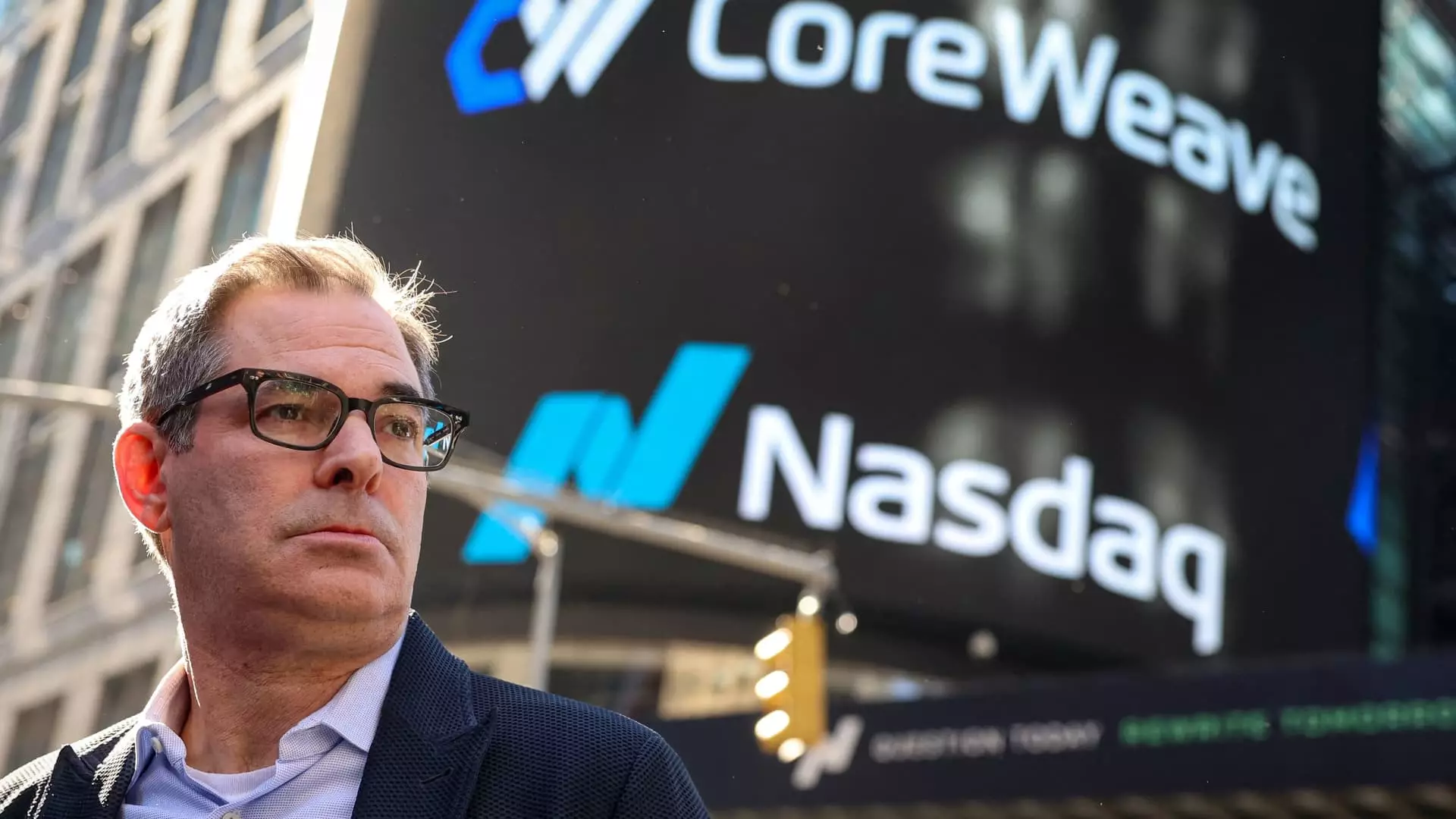In the ever-evolving landscape of artificial intelligence, CoreWeave is twinkling brightly, consistently making headlines with its impressive earnings reports and ambitious investments. Yet, while the company boasts remarkable revenue projections and significant growth rates, the underlying issues cannot be ignored. Recent data reveals that CoreWeave anticipates a staggering capital expenditure of between $20 billion and $23 billion for the year, far surpassing the analyst estimates, which hovered around $4.61 billion. This figure, while ostensibly promising, raises important questions about the sustainability of such growth, especially when juxtaposed with the company’s mounting debt.
The inflation of capital expenditure figures may seem like an indicator of robust growth, but it also signals a company under pressure to meet seemingly insatiable demand. CoreWeave’s CEO, Michael Intrator, characterized this expenditure increase as a response to “demand signals” from key clients. Yet, one must wonder if these “demand signals” are more about inflated expectations and less about long-term viability. In an economic climate marked by volatility and shifting trends, such predictions can quickly become a double-edged sword.
The Stock Market’s Volatility: A Бlurred Reflection of Confidence
Following its first earnings report since debuting in March, CoreWeave’s shares demonstrated their volatility. The stock oscillated between a drop of over 5% and a subsequent climb of 5%, a rollercoaster of investor sentiment that reflects concerns about both short-term gains and long-term stability. While CoreWeave can celebrate meteoric revenue growth—420% in its latest period—the specter of debt looms ominously over this success. Analysts have raised flags over the company’s financial architecture, questioning the capacity to sustain growth amidst increasing liabilities.
Notably, DA Davidson’s analyst Gil Luria expressed that CoreWeave’s strategy may not justify the risks involved. His downgrade to “underperform” stems from the incongruity between the high cost of acquiring assets and their relatively low returns. A 12.5% financing rate juxtaposed with a mere 5% return is not just troubling; it’s indicative of a business model that might prioritize short-term wins over sustainable long-term growth. The notion that rampant growth will simply translate into success is a fallacy that too many tech companies have fallen prey to before.
Client Contracts: A Mirage of Stability?
Much has been made about CoreWeave’s partnerships with titans like Microsoft, Nvidia, and others. These alliances are often heralded as evidence of CoreWeave’s strong market positioning. However, the reality of client contracts is more nuanced. Intrator’s assurances that financing remains robust and that lenders feel secure about contract values may be comforting, but they don’t fully reflect the volatility of the market. Lenders, while seemingly optimistic, can quickly retract their support in the face of shifting demand or diminished revenues, a fact no one in the tech realm should disregard.
While CoreWeave boasts a five-year deal worth nearly $12 billion with OpenAI, alongside other substantial agreements, it does open the question of dependency on a handful of major clients to drive growth. This sometimes creates a precarious balance—too much reliance on key partnerships can lead to challenges if those partnerships falter or evolve in a manner that isn’t beneficial for CoreWeave. It’s a high-stakes game that could put the company on shaky ground if it fails to diversify its client base effectively.
The Bright Future or a Dimming Flame?
CoreWeave’s narrative encapsulates the age-old tension between the exuberance of growth and the sobering realities of maintaining that growth sustainably. The projected revenue for the year sitting between $4.9 billion and $5.1 billion, accompanied by significant backlogs, make it tempting to view this company as an unstoppable force within the AI sector. However, the greater context—the debt load, the pressure to continually expand, and the challenges that may arise from concentrated client relationships—paints a much more complicated picture.
Contrarily, these concerns shouldn’t fully overshadow CoreWeave’s potential; they should spark a necessary dialogue about risk management and strategic growth. The AI revolution is indeed transformative, but companies like CoreWeave must not lose sight of the principles that guide resilient, sustainable growth. As investors weigh the balance of risk and reward, the question remains: is CoreWeave an up-and-coming juggernaut, or does it risk becoming yet another cautionary tale in the annals of tech history?

